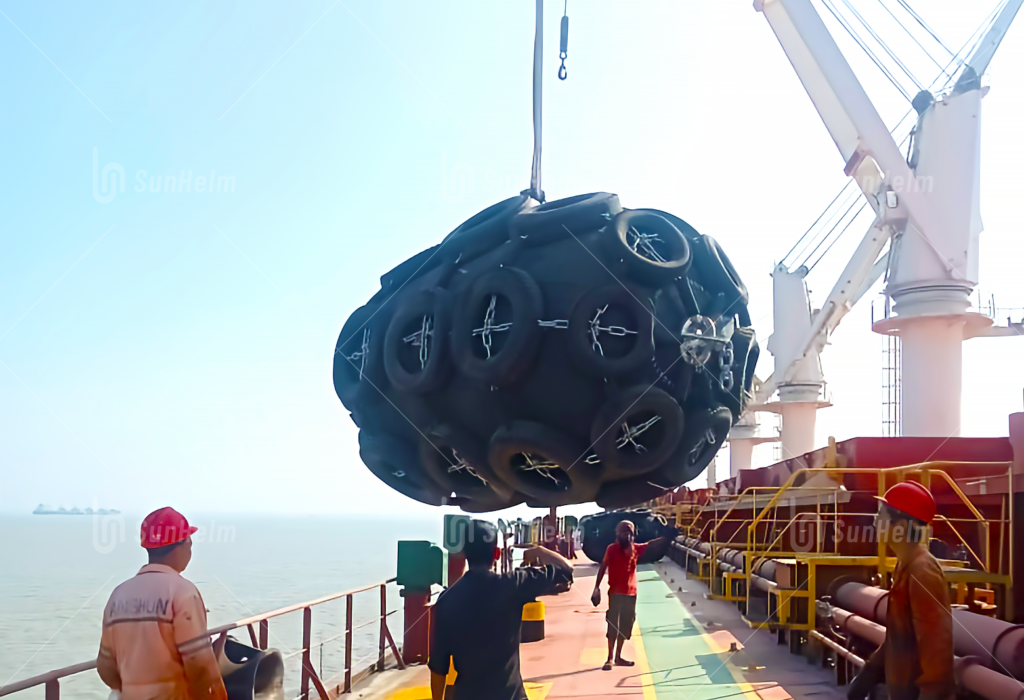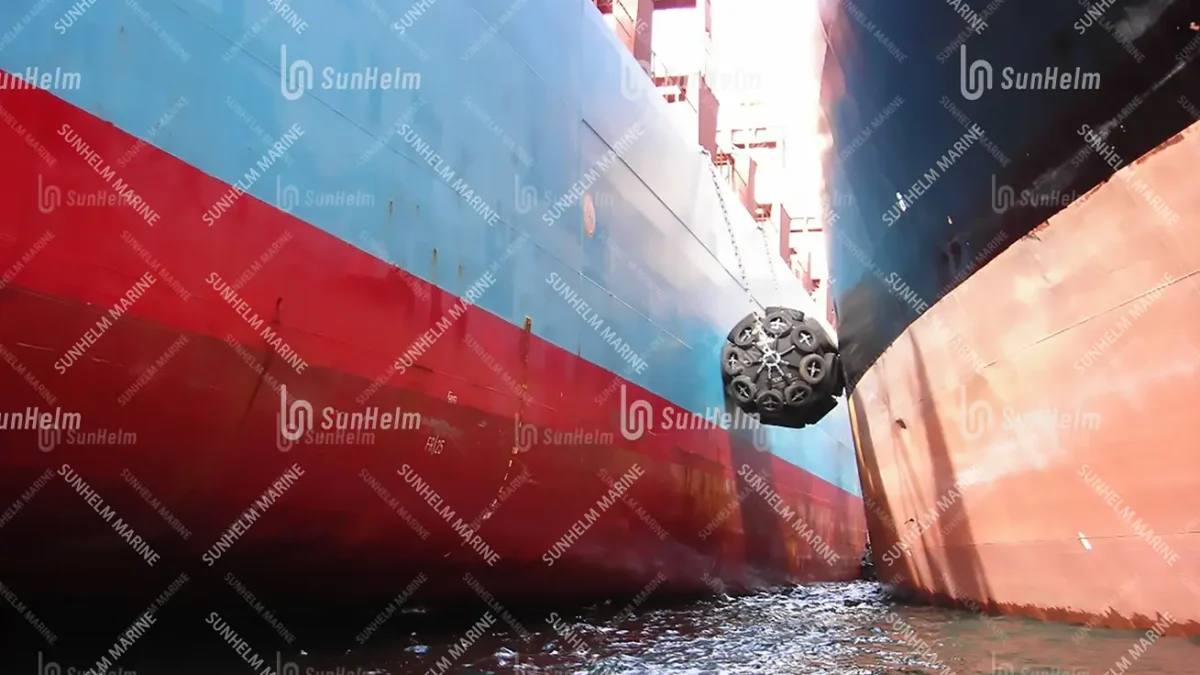1. Introduction
Pneumatic fenders—also known as Yokohama fenders—play a vital role in ship berthing, ship-to-ship (STS) transfers, and offshore operations. Proper storage is essential not only to extend the lifespan of the fenders but also to ensure safety during use. In this article, we’ll explore two proven shipboard storage methods: using a fender davit system and applying full deflation with folding.

2. Preparation Before Storage
1. Cleaning and Inspection
Start by washing the fender with fresh water and a mild detergent to remove salt and dirt. Then, inspect the rubber for cracks, aging, or marine growth. Don’t forget to check valves and chains for signs of rust or damage.
3. Ideal Storage Conditions
1. Maintain Internal Pressure
To prevent internal sticking or folds, it’s best to store the fender with slight internal pressure (20–30 kPa). Avoid both full inflation and total deflation during long-term storage, as either extreme can cause damage.
2. Protect from the Environment
Next, choose a cool, shaded, and well-ventilated area for storage. Ideally, keep the temperature between 10–25°C (50–77°F). Moreover, avoid exposure to sunlight, UV rays, or heat sources. Keep fenders away from chemicals, oils, and any ozone-generating equipment. Finally, place fenders on soft supports like tires or cradles to prevent surface damage.
4. Two Main Storage Methods on Ships
4.1 Store with a Fender Davit System
A fender davit is a mechanical lifting arm mounted on deck. It allows you to lift, deploy, and store pneumatic fenders efficiently and safely. It includes a hydraulic or electric winch, a swing arm, and a cradle to hold the fender.
▪️ Benefits
This system offers multiple advantages. First, it speeds up deployment with push-button control. Second, it reduces manual labor and risk of injury. Third, it keeps the fender suspended safely, avoiding shape distortion. Finally, it frees up valuable deck space, which is essential on busy vessels.
▪️ Maintenance Tips
To ensure safe operation, match the cradle size to your fender model. Also, inspect bolts, winches, and hydraulic hoses regularly. Additionally, lubricate all moving joints and clean off any salt buildup. You should test the davit’s lifting function every 3–6 months.
4.2 Store by Full Deflation and Folding
If your ship doesn’t have a fender davit, deflating and folding the fenders is a simple alternative—especially for smaller vessels or backup fenders.
▪️ How to Do It
First, release all air from the fender by opening the valve. After that, fold the fender lengthwise and roll it tightly from one end. Then, wrap the fender in a bag or store it inside a crate to protect it from UV light and sharp objects.
▪️ When to Use This Method
This method works well for short-term storage (under 3 months). It helps save space on deck and is ideal for spare or emergency-use fenders.
▪️ Warnings
However, full deflation is not suitable for long-term storage. It can lead to inner rubber layers sticking together or cracking. Before reusing the fender, reinflate it to the recommended pressure and inspect it for damage.
4.3 Quick Comparison
| Method | Pros | Cons | Best For |
|---|---|---|---|
| Fender Davit | Fast, safe, protects shape, saves space | Costly, needs regular maintenance | Large vessels, daily operations |
| Deflation Storage | Easy, low-cost, space-saving | Not ideal long-term, risk of damage | Small boats, spare fenders |
5. Routine Inspection & Maintenance
To keep fenders in top condition, inspect them every 3–6 months. Check for surface cracks, valve leaks, or rusted chains. At the same time, examine the davit system—verify cradle strength, test the control panel, and clean hydraulic parts. Keep a pressure log and service history, especially if storing for longer periods.
6. FAQ
| Question | Answer |
|---|---|
| Should I fully deflate the fender? | Only for short-term storage. Use slight pressure for long-term storage. |
| Can I stack fenders on deck? | No. Always store them separately to avoid deformation. |
| What if the fender davit fails? | Use ropes or manual winches and repair the davit ASAP. |
| Where should I install the davit? | Near the ship’s side, with space to swing out and operate safely. |
7. Conclusion and Recommendations
In conclusion, both storage methods have clear benefits. Use a fender davit if your ship frequently deploys fenders—it saves time, space, and improves safety. On the other hand, deflating and folding is useful for short-term or emergency storage on smaller vessels.
To protect your investment:
- Store fenders in shaded, cool areas
- Keep them slightly pressurized (unless stored short-term)
- Use fender davits if possible
- Inspect regularly and document every check
By following these tips, you can keep your pneumatic fenders in excellent condition and ready for every operation.


